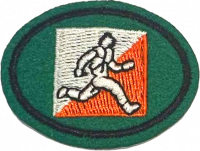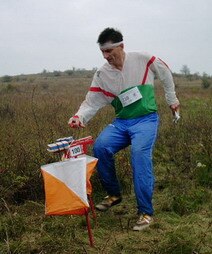AY Honor Orienteering Answer Key
BEFORE YOU START
The objective of this honour is to give participants an exposure to the sport of Orienteering. The intent is to only use basic resources (i.e, Manual Control Card Punch System) rather than sophisticated electronic equipment that is being applied to professional and national events.
These notes were compiled by Albert Piper of the South Queensland (Australia) Conference. Albert is a member of Orienteering Queensland (QOA) which is affiliated with Orienteering Australia, which in turn is affiliated with the world body - the International Orienteering Federation (IOF).
The contribution of materials and advice from Orienteering Queensland is gratefully acknowledged; in particular that from Liz Bourne & Eric Andrews.
While much of the information provided in these notes will apply to any part of the world, trainers need to note that the notes have a South Queensland ‘flavour’. Local requirements need to be taken into account and applied.
A team of competent instructors / trainers is strongly recommended.
1
Orienteering is a sport which combines outdoor recreation with map reading and navigational skills.
It involves navigating through the bush with the aid of a specially produced map and orienteering compass. The objective is to locate checkpoints (controls) on various natural and man-made features along the way; for instance boulders or track junctions.
In competitive orienteering, the person successfully completing their course in the quickest time is the winner.
It is this stimulating mental challenge as well as the physical activity that makes orienteering so popular. Because a variety of courses are offered to suit all ages, levels of fitness and ability, it is a sport the whole family can participate in and enjoy - from beginners through to the elite competitor.
You can walk, jog or run, depending on your level of fitness and how competitive you wish to be. Orienteering has the nickname of “Cunning Running”.
The History of Orienteering
Orienteering began in Scandinavia in the nineteenth century. It was primarily a military event and was part of military training.
It was not until 1919 that the modern version of orienteering was born in Sweden as a competitive sport. Ernst Killander, its creator, is often called the father of orienteering.
In the early 1930’s, the sport received a technical boost with the invention of a new compass which was more precise and faster to use. The Kjellstrom brothers, Bjorn Alvan, and Brunnar Tillander, were responsible for this new compass. They were among the best Swedish orienteers of the 1930’s with several individual championships among them.
Once Orienteering became popular as a family sport in Scandinavia, it spread throughout Europe. It reached Australia as an organised sport in 1969 .
2
Orienteering disciplines include Mountain Bike, Wheelchair, Snow Skiing, Parks and Street, Horseback, Scuba and Cross-Country.
Most orienteering events are standard cross-country ones where the controls must be visited in the specified order. These range from local club events where there may only be four courses offered to State Standard Events which have five to eight courses.
There will generally be a Blue (Very Easy), Green (Easy), Orange (Moderate) and Red (Hard) course offered. In these types of competition, orienteers may enter any standard of course they wish. Men and women compete on the same courses regardless of their age.
Other types of events include:
- Score - competitors are required to find as many controls as possible in a given time - usually 30 or 60 minutes - in no set order. Varying points are often allocated for each control. Those of the hardest technical standard have the highest points.
- Scatter - competitors have to find all of the controls but may get them in any order.
- Night – all the above events can be done at night to give it a new dimension and extra difficulty. To ease the difficulty a little, torches are required and reflective tape is fixed to the control flag on all sides so that it will be seen at any direction when the torch light hits reflective tape.
3
3a
Clothing requirements should be based on climatic conditions at the time of the event. For beginners, wear comfortable outdoor clothes. Shorts are OK, but long pants will protect the legs when going through the bush or long grass.
Keen orienteers compete in colourful ‘O suits’ made of lightweight, breathable nylon or lycra. These provide protection against vegetation as well as being comfortable to wear in warmer conditions. Many orienteers also use gaiters to protect their legs against scratches and bruising.
3b
For beginners, sturdy footwear such as joggers is adequate. There is a wide variety of special orienteering shoes available but many people find that shoes with rubber studs, designed for grass sports such as hockey, are also quite suitable. Running shoes generally do not provide sufficient ankle protection in rough terrain.
3c
- An orienteering compass – these may be purchased from most outdoor stores or
borrowed at the event
- A map (supplied by the organisers)
- A plastic bag to protect your map
- A hat and wear sunscreen especially if it is likely to be hot
- A whistle to attract attention if injured or lost
- A watch
- Water to drink, before and after the competition
- Basic First Aid kit
4
5
6
7
8
9
10
10a
10b
10c
10d
10e
11
12
13
14
14a
14b
14c
14d
14e
- Note: Those who like a challenge and who wish to improve their Orienteering skills are encouraged to do a Red (Hard) Course. This is not required for this level of Orienteering.
15




